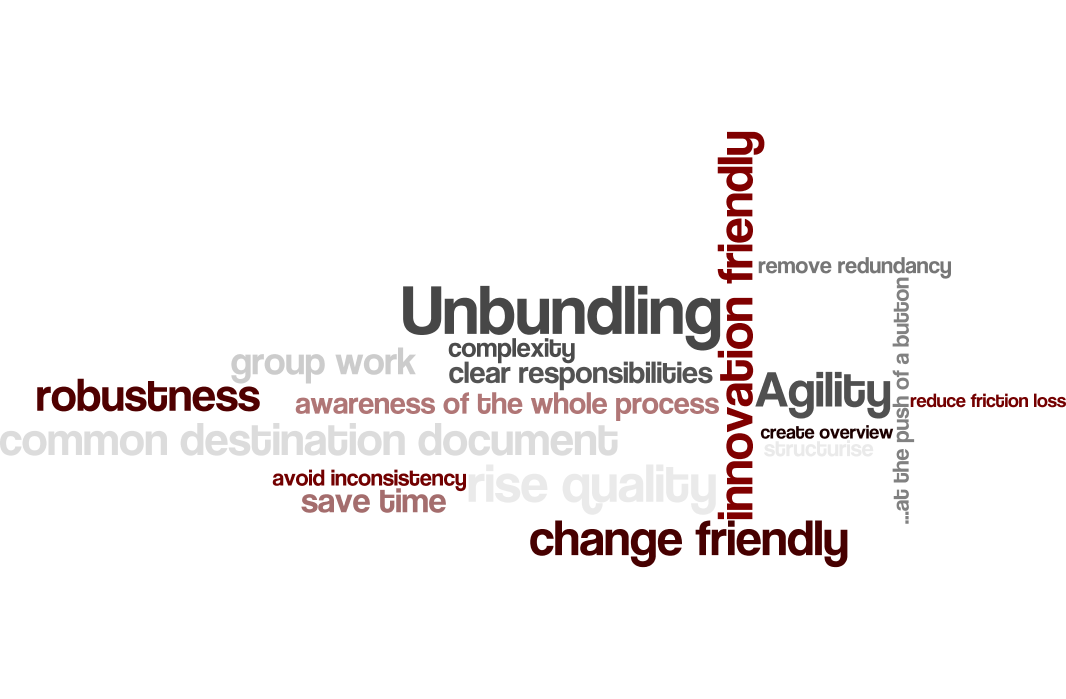When several (groups or) authors are working on a complex and comprehensive document, collisions and friction losses commonly occur. So, how can we unbundle co-operative work?




How group work can transform from a potential risk into a factor of success.
When several (groups or) authors are working on a complex and comprehensive document, collisions and friction losses commonly occur. So, how can we unbundle co-operative work?
 Unbundling
Unbundling
In most cases, co-operative work is greatly beneficial. However, often the results are to coalesce into one single document.
For instance, let us think of the following situations:
Planning the execution of a large opinion poll on the living habits of a certain population group, including the raising and analysis of the data.
Creation of a survey on the current situation of a medium-size firm, and development of mid-term goals and measure for their implementation, including market surveys along with polls of potential customers, and including raising and analysis of the data.
Planning of a complex study including practical raising of data.
Here, undesired side effects can occur easily: interfering changes by multiple authors, deliberate redundancies of document contents hamper the overview, the separation of content responsibility and authorship yields wrong wording.
b>Benefits are manifold:
The quality of results rises due to (a) the clear structuring of domain contents, (b) the definition of responsibilities and (c) the removal of redundancy combined with automated generation of the final documents. The utilization of building blocks avoids errors.
Inconsistent states are avoided (higher degree of robustness of the processes).
The de-centralized co-operation, happening aware of the big picture, saves time formerly spent for intense change efforts (synchronisation of redundant document parts).
The unbundling as such simplifies adaptation and thus increases agility. Utilizing pre-defined building blocks increases process agility, too, and furthermore saves time: deploying building blocks makes adaptation to new requirements easy and centrally realizable.
Commonly, unbundling documents eliminates problems and accelerates and stabilises the work. For this purpose, the contents of the desired final document is distributed to several de-central documents, whose contents are correlated down to the appropriate level of detail using IT. Thus, after the unbundling, the involved experts are working de-centralized but still aware of the whole. Only at the project's end the final document is created at the push of a button. It may also contain redundant elements, which, however, is fully harmless, as those will never be changed manually.
During unbundling an information-centered process analysis is performed, and building blocks and relationships are identified and represented in the IT system.
Are you interested in more details? Don't hesitate to contact us! We are looking forward to getting to know you.
